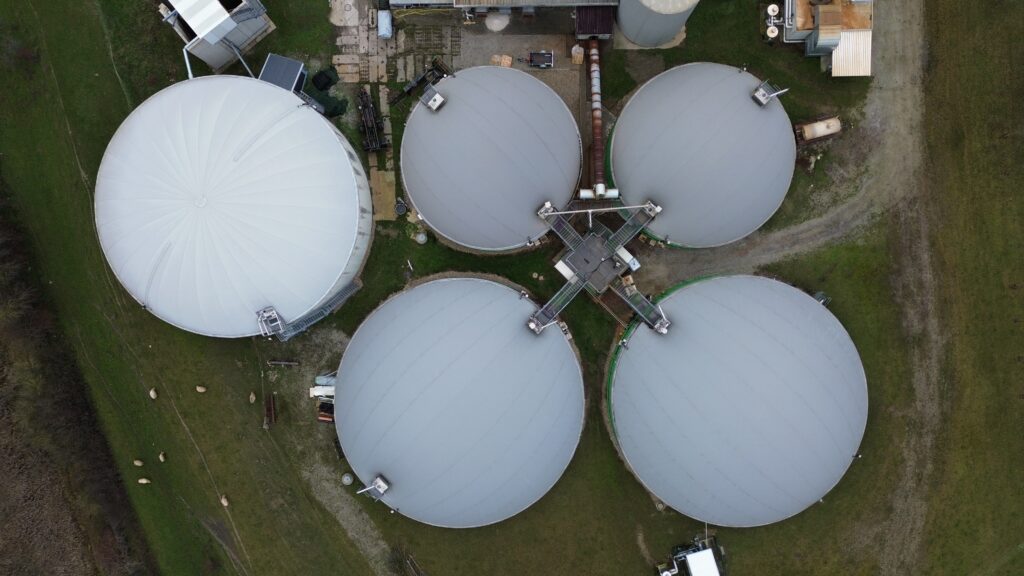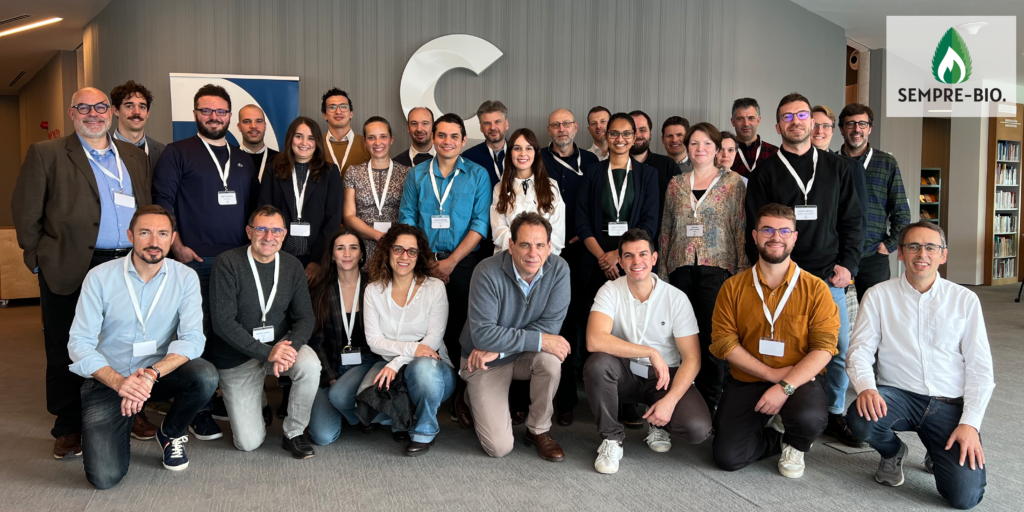The potential of Biomethane in Europe

The potential of Biomethane in europe SEMPRE-BIO The production and deployment of biomethane offers significant GHG savings with furthermore positive impacts on rural employment. GHG emissions reduction potential of biomethane is large. Biomethane typically achieves over 80% emission reduction when it replaces fossil fuels and some pathways even achieve up to 200% (through preventing methane emissions from waste). The GHG performance of biomethane may be impacted by leakage of methane across the production process. An analysis by the European Biogas Association indicates that the overall impact of fugitive methane emissions of the European biogas sector is relatively modest and would represent between 0.75% and 3.7% of the total methane emissions, assuming a value of 1% to 5% methane leakage respectively. If the avoided emissions from using manure in anaerobic digestion are also considered, then overall the GHG savings of anaerobic digestion deployment in Europe are significant. Biomethane is a renewable gas that is produced from organic matter, such as agricultural waste,food waste, sewage, and landfill gas, through a process called anaerobic digestion. Anaerobic digestion is a natural biological process that occurs in the absence of oxygen, where microorganisms break down organic matter and produce biogas as a byproduct. Biomethane can be used as a direct substitute for natural gas in various applications, including heating, electricity generation, and as a fuel for vehicles. It is considered a renewable energy source because it is derived from organic waste materials that would otherwise decompose and release methane into the atmosphere, a potent greenhouse gas. By capturing and utilizing biomethane, we can reduce greenhouse gas emissions and utilize organic waste in an environmentally friendly manner. Furthermore, biomethane can be injected into the natural gas grid, allowing it to be distributed and used in existing infrastructure, such as homes, businesses, and industrial facilities. It offers a renewable and sustainable alternative to fossil fuels, contributing to a more sustainable and low-carbon energy system Below are some key points to know about biomethane: Biomethane is a renewable energy source produced from organic waste materials, such as agricultural residues, food waste, and sewage sludge. Biomethane can be used as a direct substitute for natural gas in heating systems, electricity generation, and transportation, reducing the reliance on fossil fuels. In addition, when biomethane replaces natural gas, it avoids the extraction and transportation of fossil fuels, which results in additional GHG emissions. By displacing fossil fuels, biomethane can contribute to achieving national and international GHG reduction targets and commitments, helping to mitigate climate change. A recent map [link] in May 2023 by Gas Infrastructure Europe (GIE) shows that Biomethane production has grown significantly over the last decade, with a nearly 30% increase in the number of biomethane plants since last year. The countries with the strongest growth in their biomethane production in 2021 were France (+ 2,130 GWh), Denmark (+ 1,642 GWh) and Germany (+ 1,553 GWh). This is a significant signal for the industry’s efforts to scale up production and push for greater acceleration in order to meet the 35 bcm objective specified by the European Commission in the REPowerEU plan by 2030. This project has received funding from the European Union’s HORIZON-CL5-2021-D3-03-16 program under grant agreement No 101084297. Views and opinions expressed are however those of the author(s) only and do not necessarily reflect those of the European Union or the European Commission. Neither the European Union nor the granting authority can be held responsible for them. Follow us Facebook Twitter Linkedin Contact us info@sempre-bio.com Cookies Policy Privacy policy ©2023 Semprebio | All Rights Reserved | Powered by Scienseed
SEMPRE BIO KickOff Meeting

SEMPRE BIO KickOff Meeting New cost-effective ways to produce biomethane SEMPRE-BIO consortium representatives The European SEMPRE-BIO project will demonstrate new cost-effective ways to produce biomethane The SEMPRE-BIO project, co-funded by the European Commission’s Horizon Europe program, will test new cost-effective biomethane production solutions that facilitate compliance with the European Green Deal. Cetaqua, water technology center, leads this initiative, in which Aigües de Barcelona, the Metropolitan Area of Barcelona and thirteen other partners from six different European countries also participate. Barcelona, November 24, 2022 – The drastic rise in global temperatures must be tackled imminently to avoid fatal consequences for ecosystems and humanity. To achieve this goal, the European Union has set out to reduce net greenhouse gas emissions by at least 55% by 2030 and to become a climate-neutral continent by 2050. In this context, Europe must reduce its dependence on fossil fuel imports and biomethane will play a crucial role in achieving this. However, this sustainable fuel has certain limitations, such as its high production cost, the viability of small farms, or the difficulty of treating non-fermentable waste. To address this situation, the European research project SEMPRE-BIO, led by Cetaqua, water technology center, has recently been launched to demonstrate new cost-effective biomethane production solutions. This initiative will seek to reduce the investment and operating costs of biomethane production plants and extend the biomethane production potential through new waste valorization routes. Likewise, SEMPRE-BIO will also propose alternative monetization sources, such as the valorization of biogenic CO2 or the commercialization of biochar. The implementation of the solutions proposed in the project is expected to promote circular economy projects at the local level and reduce dependence on imports of natural gas and liquefied natural gas (LNG). On a large scale, SEMPRE-BIO aims to promote the use of biomethane as a substitute for fossil fuels used in transportation and the natural gas grid, with an estimated reduction in CO2 emissions of 213 million tons per year by 2050. Three innovation ecosystems to test biomethane production technologies in Europe To achieve its objective, SEMPRE-BIO will create three innovation ecosystems in which, through co-creation processes, specific solutions will be proposed for each of the scenarios, representatives of the different situations existing in Europe regarding biomethane production. In particular, five innovative technologies will be tested, which will contribute to diversifying the conversion technology base for biomethane production, and their replication in other plants will be encouraged. On the other hand, a comprehensive technological and economic assessment will be carried out to show the benefits of these solutions compared to fossil gas and conventional biogas upgrading technologies, overcoming existing barriers to their mass adoption. Such assessment will mainly focus on aspects related to the improvement of biomethane production efficiency and cost reduction, but will also have a strong focus on the minimization of greenhouse gas emissions, aiming at increasing sustainability and fostering circular economy models. SEMPRE-BIO will be tested in three plants throughout Europe. In Spain, the Baix Llobregat ecofactory, managed by Aigües de Barcelona, will be the site where biomethane production technologies that will allow the valorization of currently untapped biogas streams will be demonstrated. The biogas will be converted into compressed natural gas (CNG) through a power-to-gas hydrogen methanation process, for use in Barcelona’s public transport. The Bourges green waste treatment plant in France will produce biomethane from non-digestible urban green waste for injection into the grid. Finally, in Adinkerke, Belgium, De Zwaenepoel, a farm with no connection to the natural gas grid and low biogas production, will be the scenario where SEMPRE-BIO will demonstrate solutions for biogas purification and production of liquid biomethane, a renewable fuel ideal for heavy transport, such as trucks or ships. The biomethane generated here will be stored locally in liquefied form and distributed by road transport, while the CO2 will be commercialized and its conversion to polymers and proteins will be studied. A consortium formed by 16 entities with experience in the field of research and technological development in Europe This initiative is part of the Horizon Europe funding program of the European Commission. Under the leadership of Cetaqua, Centro Tecnológico del Agua, the SEMPRE-BIO project consortium is formed by the Spanish companies Aigües de Barcelona, Naturgy, Cryo Inox and Inveniam, Propuls from Germany, TerraWatt from France, Innolab and NV De Zwanebloem from Belgium; the Metropolitan Area of Barcelona as a public entity; the research centers DBFZ from Germany, SINTEF from Norway, and Biogas-E, from Belgium. From academia, the Technical University of Denmark, Ghent University in Belgium, and the BETA Technological Center of the UVic-UCC in Spain will participate. Social networks Twitter: @CETAQUA LinkedIn: @CETAQUA Contact: David Pacheco, Project Communications Manager at Cetaqua david.pacheco.ext@cetaqua.com | +34 673 414 909 Cetaqua BarcelonaCrta. Esplugues, 7508940 Cornellà de Llobregatwww.cetaqua.com This project has received funding from the European Union’s HORIZON-CL5-2021-D3-03-16 program under grant agreement No 101084297. Views and opinions expressed are however those of the author(s) only and do not necessarily reflect those of the European Union or the European Commission. Neither the European Union nor the granting authority can be held responsible for them. Follow us Facebook Twitter Linkedin Contact us info@sempre-bio.com Cookies Policy Privacy policy ©2023 Semprebio | All Rights Reserved | Powered by Scienseed

